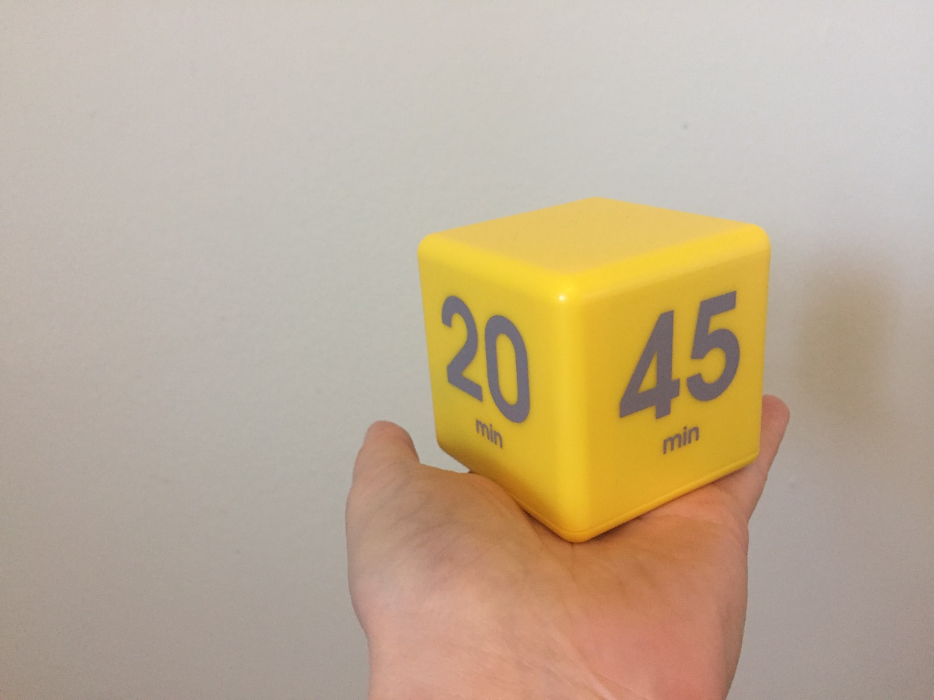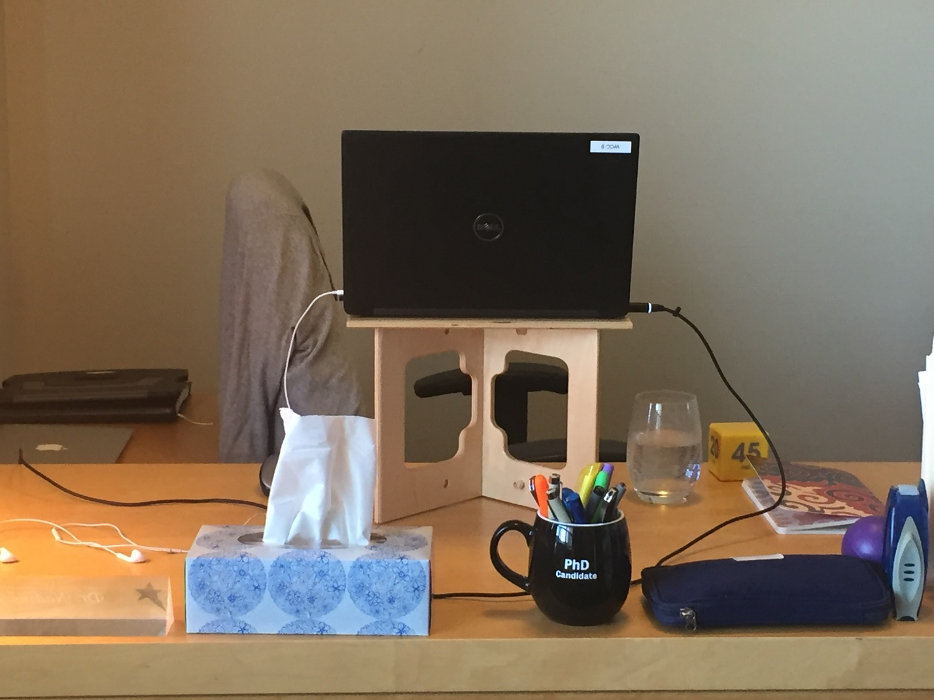A few weeks ago Elise Vist wrote about how tough writing is right now as part of her blog post about how to get the most out of the WCC’s Virtual Writing Cafés. Like many of you, I’m finding certain aspects of working from home challenging; it’s tougher than ever to research and write. But there is still writing to do: I have blog posts, grant proposals, and online workshops to finish and you might have course assignments, journal articles , or a dissertation to work on. So, I thought I would share how I have been approaching my own writing sessions lately. I hope that some of the writing strategies, tools, resources, and gadgets that have been helping me will help you to focus and put words on the page, too.
Get in the right frame of mind
Blank pages make me anxious. Filling those pages with the “right” words feels like a lot of pressure, and sometimes I deal with this pressure by just not starting to write at all. I’ve found that easing my way into a writing session with a low-stakes warm-up ritual can help to put me in the right frame of mind. On days when I’m feeling ready to dive in, that involves brewing a cup of my favourite tea – one that keeps me alert, but not jittery – and using these guided questions to set goals for my writing session and make a plan for what I will do if I get stuck. On days when I need to work my way up to even opening the file for a project in progress, I warm up with a little meditation or yoga to calm my inner critic. I use Headspace, but I also like this quick, 5-minute YouTube meditation for writers. Campus Wellness also has a resource full of suggestions for free or low-cost mindfulness exercises and tools. Find a warm-up that works for you to help you transition into writing time. One creative example I’ve come across: doing a set of 10 pushups to get the blood flowing to your brain!
Set a timer to increase focus

I really like pomodoro-style timed writing sessions. I find this approach useful because 1) breaking a writing task down into bite-sized chunks makes it seem less daunting and 2) I am able to focus better during these short writing bursts because I know I have a built-in break coming to check email, get a snack, etc. When I’m working on a task that I am not excited about, I set myself up for 20-minute poms, which helps me to get started doing the thing. If I’m working on something I’m genuinely excited about and am likely to get wrapped up in the task, setting a timer for 45 minutes reminds me to get up and walk around every so often so that I don’t burn through my energy too quickly. I use a timer cube as I enjoy the tangible and decisive action of flipping the cube to set the timer before beginning a task, but you can also set a timer on your phone, use a kitchen timer or the timer on your stove or microwave, or use a free online timer like marinaratimer or tomato-timer.
Figure 1: A close-up of the author's beloved timer cube.
Pay attention to your body’s needs
Some people can write in intense 10- or 12-hour sessions. I am not one of those people. In fact, I once developed a repetitive strain injury that an orthopedic surgeon told me was caused by “too much writing.” So, if I want to be able to write again tomorrow, I need to treat my body gently today. For me this means making sure I use my breaks between pomodoros to step away from the computer screen, move around, or shift positions. If I’m going to be working on my laptop all day, I like to alternate between sitting and standing using a portable standing desk so that I’m not stuck in one, hunched-over posture. Sometimes, even if my body doesn’t need the shift but I’m stuck or stalled with my writing, changing positions and standing to write for a pom will re-energize me. I use a StandStand that packs up flat and that – in pre-COVID times – was easy to transport between home, the WCC, or the library, but if you can find boxes or textbooks that are sturdy enough, you can recreate the standing desk experience for free. On days when I don’t use a standing desk, this quick set of stretches for writers keeps my body from getting too stiff. Don’t forget to keep a snack and a glass of water or water bottle handy, too. It’s hard to think smart thoughts when you’re hangry. During writing sessions, I like to snack on apples and peanut butter or hummus and veggies because I am still a child inside who loves foods that can be dipped.

Figure 2: The author's standing desk setup: Water? Check. Timer cube? Check. Research journal? Check? Ear buds? Check. Bonus points for the GSPA mug filled with pens and highlighters.
Block out distractions
Even though I live alone, my apartment building was not built to be as quiet as an office. Sometimes I hear conversations on a balcony or in the hallway. Today it’s the construction noise that inevitably comes with warm weather that is distracting me. When I need to block out these sounds, I pop in a set of ear buds and listen to something more soothing on Noisli or Coffitivity. These more predictable, ambient sounds can make it easier to ignore your roommates’ video conference conversations.
Since my apartment feels like home, the boundaries between work time and leisure time are also blurry these days. I sometimes find myself scrolling through Twitter or watching a press conference (or let’s be honest, watching YouTube videos) when I should be writing a blog post (ahem). When I absolutely have to focus, I’ll use an internet blocker like SelfControl (for Mac users), Cold Turkey, or Freedom to temporarily restrict my access to my procrastination pitfalls (email, Facebook, Twitter, YouTube, Netflix, etc.) while still retaining access to everything else I need online to write (library databases, dictionaries, APA style guide, etc.).
Find a friend
My best, most productive work time of the week used to take place during the WCC’s Faculty Writing Café on Wednesday afternoons. Carving out a specific time and place to write each week, combined with the positive peer pressure of being surrounded by other writers who are hard at work, worked wonders for my focus. The snacks didn’t hurt, either. I may not be able to write in the same room as others these days, but I try to approximate that experience by signing into a Virtual Writing Café each week. If you’re not able to join us for one of the WCC’s Virtual Writing Cafés, you might consider using a tool like Focusmate to find an instant productivity buddy, or setting up writing sessions of your own with friends using Microsoft Teams, Skype, Zoom, Twitter, Facebook, or another platform of your choice.
Wrap up with reflection
Once I finish my final pom, I am tempted to collapse into an exhausted heap on my desk or reward myself with a walk or a dance party (more YouTube!). But I’m not done with my writing session when the writing ends. Just like at the beginning of my writing session, I like to use a transition ritual to wrap up. The one I have found to be most useful is this quick journaling template that Nicole Westlund Stewart adapted for writers based on her experience as a mental skills coach for athletes. It takes two minutes and helps me to check in on how I’m feeling about the project I’m working on and what adjustments I need to make the next time I sit down to work on it. Other options for wrap-up rituals might include leaving yourself notes for where to start when you pick up the project again, recording ideas or questions in a research journal, or writing the first half of the next first sentence. These strategies should make it easier for you to start again tomorrow.
This is what has been working for me recently, but what works for you might be different. What strategies and tools do you use that have been helpful for your writing practice?